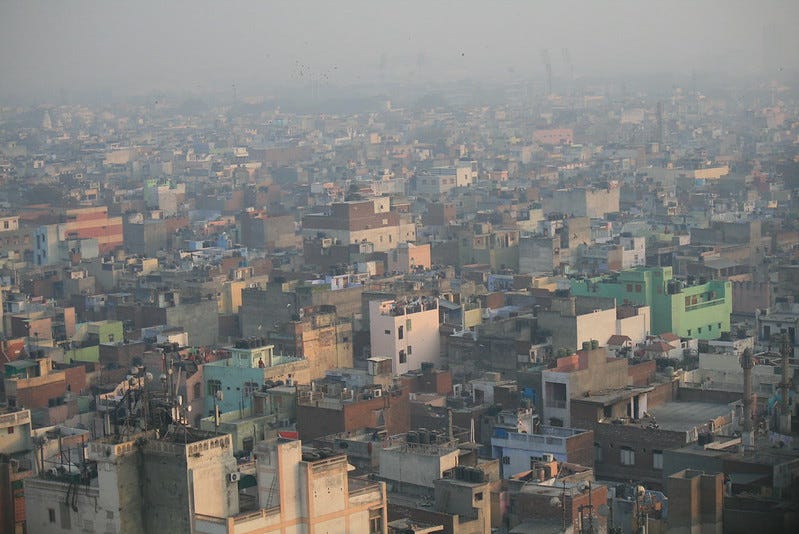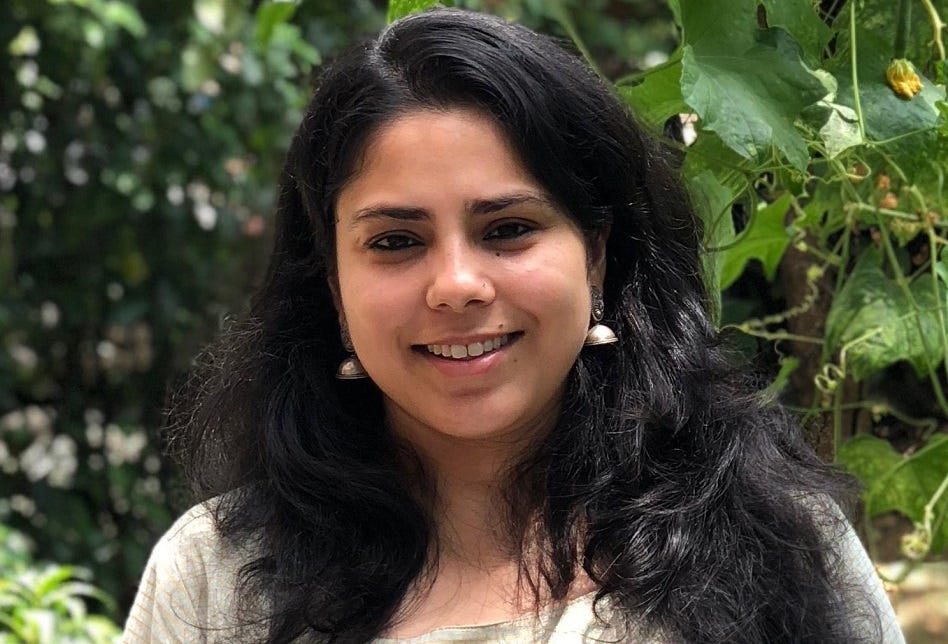The weekend read: Why 'smog lockdowns' can't solve India pollution crisis
In conversation with air quality scientist Pallavi Pant
Welcome to this weekend’s edition of Lights On, a newsletter that brings you the key stories and exclusive intel on energy and climate change in South Asia.
In case you missed this week’s story on the world’s biggest trade agreement, why India decided to pull out and what this will mean for its green sector, you can catch up here.
If you enjoy my work but you are not yet a member, please consider supporting one of the very few sources of climate and energy news putting India and South Asia under the global spotlight.

Since the early days of the pandemic, scientists all over the world have been investigating whether people who are more exposed to air pollution are more likely to get Covid, or if infected people suffer more severe symptoms in places where air quality is poor.
Delhi, with the seasonal extreme air pollution which envelops it every winter, stretching for miles beyond its perimeter, has become a prime testing ground for this grim hypothesis. The world’s most polluted capital city has seen a massive spike in cases in the past few weeks just as the smog set in, adding weight to this theory.
But scientific studies specific to India are still lacking, says air quality scientist Pallavi Pant, who founded the knowledge platform IndiaAQ Hub. It will take time before a link between Covid incidence and air pollution is understood, but this year’s crisis has already given us unique insights on how to clean up our cities - without locking them down.
Lights On: India sits at the intersection of a very high Covid caseload, extreme air pollution and poverty. What’s our scientific understanding of the situation?
Pallavi Pant: In India there is high exposure to air pollution, higher rates of chronic respiratory diseases, but also in many places there isn’t very good access to health care. So if in cities we are struggling to manage Covid patients, think about the rural parts of the country where the healthcare infrastructure doesn't exist at all.
So far we've seen thousands of studies from India that are looking at the link between lockdowns and air quality, robust studies that I think we can base our future efforts on, but not as much on the health side. Hopefully, in the next few months, we are going to learn more about what the situation is on the ground in India. But it’s going to take years for us to really understand. With Covid in particular, there are a lot of variables: how often people are getting tested, what kind of access to healthcare they have, in addition to air pollution.
One of the surprises of the Covid crisis has been the drastic improvement in the air quality of many polluted cities during lockdown. In Delhi, air quality improved by 50 percent in the first week of lockdown. Do people suggesting that locking down cities and industries would finally solve the air pollution problem have a point?
I think we need to focus on the intersection between how you want to control air pollution and how that is impacting the lives of especially the poor people. We all know what happened during lockdowns when things just shut down. And I don't think we can really justify trying to control air pollution that way. So how do we take that into account while designing things of the future so that the economic hardships are minimised to the extent possible?
Many may have learned the wrong lessons from this year’s lockdown, but does this unprecedented experience carry any useful ones?
Yes. For example, data from the shutdown period can be used to inform the National Clean Air Programme (NCAP) and build a stronger programme focused on multi-sectoral, multi-pollutant governance. In India, several studies have already reported reductions in outdoor concentrations of fine particulate matter (PM2.5) and nitrogen oxides, including nitrogen dioxide (NO2) but there has also been some anecdotal evidence about increases in household air pollution. Also, we’ve seen that ozone levels increased in some places, in part due to changes in weather patterns and in part due to the changes in concentrations of nitrogen oxides.
As we think about how we're going to control air pollution, this is a perfect example of why we can't just focus on controlling particulate matter (PM). We need to focus on multiple pollutants, think about their interactions with each other, and how that will play into any policies or programmes. It's always hard to show that with real data in any other situation, but the shutdowns have offered an opportunity to look into that and understand how that happens.
What else have we discovered looking at changes in air quality during lockdown?
I think it is going to be really critical to understand [more specifically] what was driving these changes in air pollution during that period. For example in India, and I believe in some African countries as well, there were declines in urban air pollution, because you had a reduction in traffic. But household air pollution, which comes from solid fuel use, actually increased in many places, because people were now cooking more at home and in some cases they weren't able to afford LPG or other clean energy sources.
We tend to think about air pollution in very straight terms, like we're going to change this one thing and everything's going to fall into place. But often, there are no silver bullets, because there are multiple sources, and hopefully, the central Pollution Control Board and the state Pollution Control Board can take into account this new evidence that is emerging.
Can you think of any concrete examples of how pollution and healthcare policies could be transformed in light of these new findings?
When it comes to industries and of other major sectors I think it's worth looking into how they are going to change. But we need to also be mindful about the impact on livelihoods which was extreme, and also investigate other ripple effects [of the lockdown] in the economy and the society. On the healthcare side, I think one of the challenges that we continue to face even outside of the pandemic is getting access to high quality, well collected data sets, which can be used for studies on air pollution, but equally on other public health issues. And the way this time we got organised very quickly, building data sets and making them accessible to people can be a useful lesson on how to do it once the pandemic is over, to bolster public health research in India.
The lack of monitoring infrastructure is a big problem in India - studies found that even the ambitious National Clean Air Programme lacks teeth because India is currently spending less than a tenth of what it should on a robust system of monitors. Could the Covid crisis, and the looming threat of pollution aggravating it, be a wake up call in this sense?
Data collection has been a challenge for a long time, but I think we are making progress, albeit not enough given the scale of the problem. But again, NCAP is planning to expand monitoring extensively, and the Pollution Control Board is seriously considering solutions to reduce the cost of this operation. One option is the use of satellite data to try and understand pollution patterns across India, given we will never be able to cover the entire country with enough monitors.
So we can use satellite data to try and understand where the hotspots are, and where we need to focus our efforts. Another idea is to employ low cost sensors. So I think going forward we're headed into a very hybrid monitoring mechanism, with real time data collection not just in urban, but also in rural areas. Recent years have shown us how big a contribution household air pollution makes, and it is critical that we understand what's happening to the people who live in underserved parts of the country.
That’s all for today! If you’ve been sent this newsletter, consider signing up here - I have a premium and a free version!


